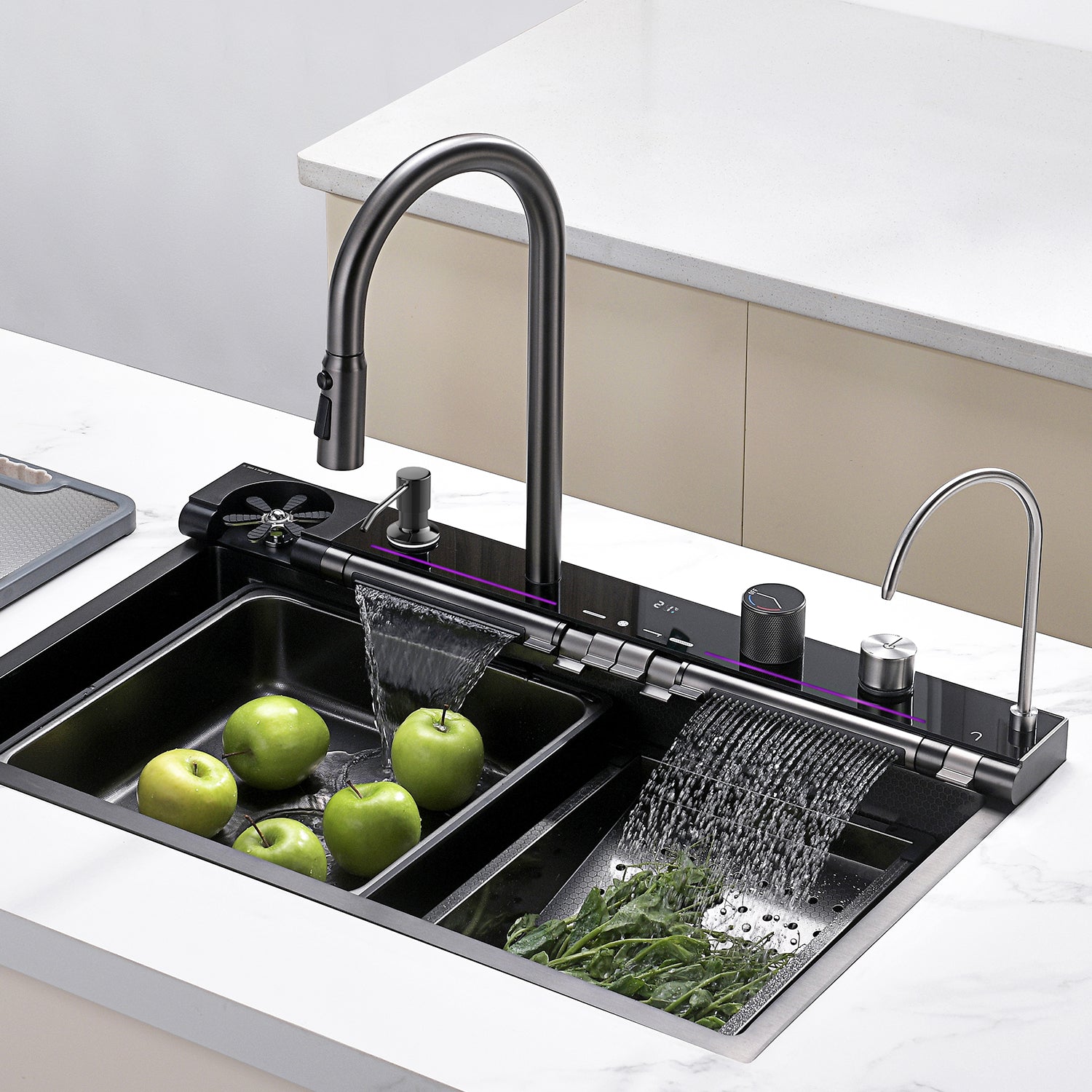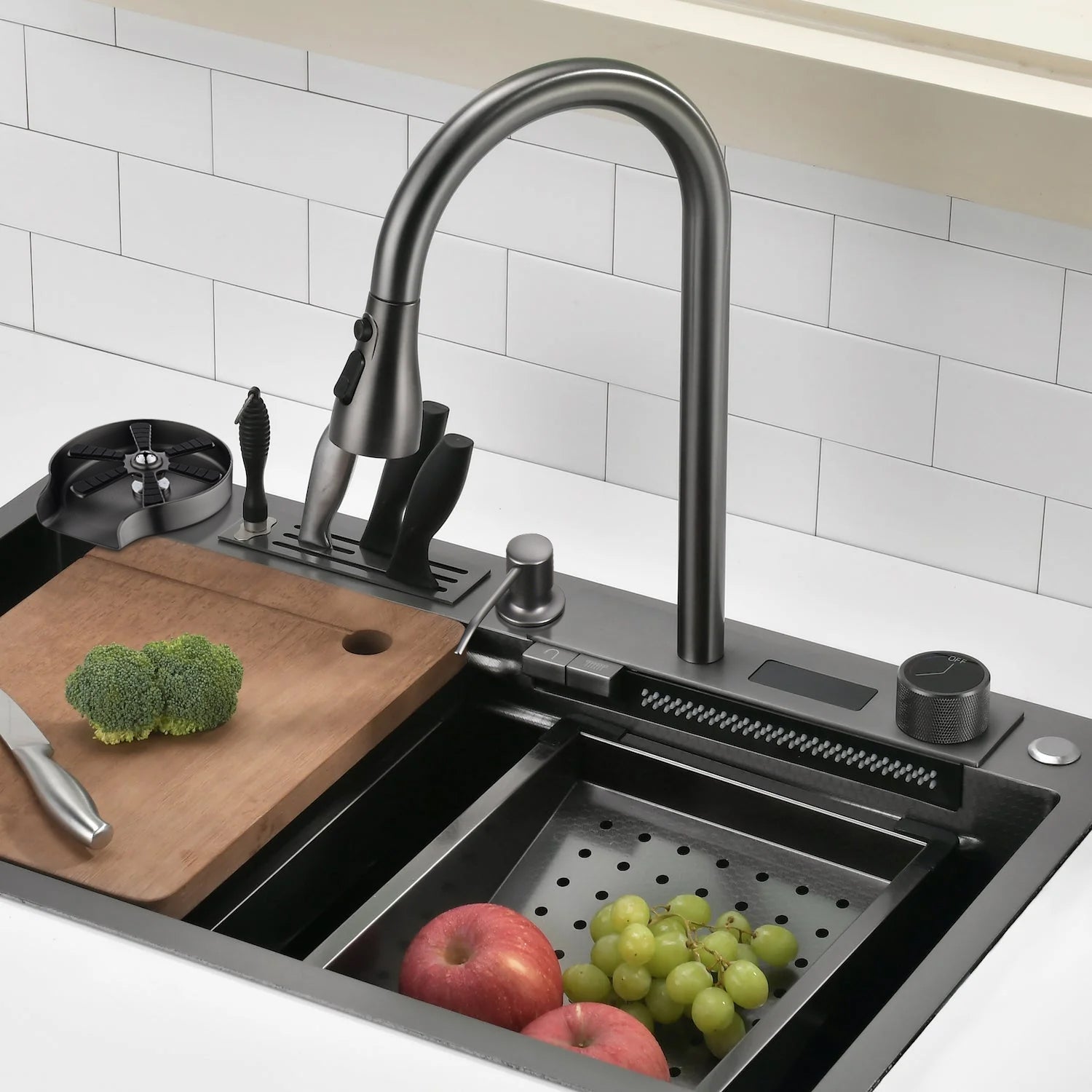Types of Kitchen Sinks: A Comprehensive Guide by LEFTON
Choosing the right kitchen sink is a crucial decision in any home renovation. At LEFTON, we understand the significance of this choice, and our mission is to provide top-notch products in Quality, Aesthetics, and Worthiness. Founded by passionate entrepreneurs committed to innovative and practical solutions for families worldwide, LEFTON stands as a symbol of unwavering commitment to excellence.
In this comprehensive guide, we'll delve into the various types of kitchen sinks, highlighting their pros and cons. We'll explore everything from traditional top-mount sinks to trendy low-divider options, helping you find the perfect sink that suits your kitchen and personality.
Exploring Kitchen Sink Types
Now, let's explore the diverse world of kitchen sinks, examining their characteristics, advantages, and considerations.
01. Top-Mount, Drop-In, or Self-Rimming Sink
The most common type of kitchen sink, installed from above based on a template provided by the manufacturer. It's easy to install, but the rim can be a cleaning hassle.
Pros:
- No special skills needed for installation.
- Overall cost is relatively low.
Cons:
- Rim prevents easy sweeping of water and debris.
- Some homeowners dislike the look of separation between sink and rim.

02. Undermount Sink
Opposite to top-mount sinks, undermount sinks are attached to the bottom of the counter with special clips. They offer a smooth look and easy cleanup.
Pros:
- Allows easy sweeping of countertop water and crumbs into the sink.
- Attractive, smooth look.
Cons:
- Gunk may collect under the counter.
- Usually more expensive to buy and install.

03. Double Basin/Bowl Sink
The most popular arrangement, dual basins allow for washing on one side and rinsing or drying on the other. Multi-purpose and highly flexible.
Pros:
- Multi-purpose and highly flexible.
- Useful in households without dishwashers.
Cons:
- Either side can be too small for large items.
- Some homeowners dislike the utilitarian appearance.

04. Single Basin/Bowl Sink
A general category, including farmhouse (apron) sinks and in-counter sinks. Single bowl kitchen sinks have no divided basin, ideal for large-capacity houses. Constructed from stainless steel, the LEFTON Kitchen Sink KS2206 boasts a honeycomb-embossed, nano-coated surface that resists water and oil stains, ensuring wear and scratch resistance for enhanced durability.
Pros:
- Large enough to wash big items.
- Ideal for large capacity houses.
Cons:
- Requires a separate drying area.
- Less popular due to inflexibility and small size.
Related reading: Single Basin Vs Double Basin Kitchen Sink

05. Farmhouse or Apron Sink
Distinguished by a front wall forming both the sink and the counter's front. Generously sized, making it easier to wash large pans.
Pros:
- Ideal for washing big casserole and baking pans.
- Closer proximity to the sink avoids fatigue.
Cons:
- Prone to dripping.
- Can be expensive compared to other styles.

06. Drainboard Sink
Combining a small basin with a counter-level drainboard, these sinks are great for limited spaces but may have small basins.
Pros:
- Great for galley kitchens or limited spaces.
- Drainboard traps water and drains it back to the sink.
Cons:
Small basins may not suit those who cook and entertain frequently.

07. Low Divider Double Basin Sink
A double basin sink with a divider stopping partway up, offering the flexibility of both single and double basin sinks.
Pros:
- Perfect combination of single and double basin sinks.
- Easier to use for food prep.
Cons:
- Limited availability may result in higher prices.
- Less room for large items compared to other types.

08. Island, Bar, or Prep Sink
Considerably smaller than primary kitchen sinks, bar sinks are used for bartending or supplementary food preparation.
Pros:
- A second sink is always welcome.
- Great for entertaining and preparing meals simultaneously.
Cons:
- May take up valuable counter real estate.
- Considered a luxury that might break your budget.

FAQs
Q1: What type of kitchen sink is easiest to keep clean?
A: For easy cleaning, consider an undermount sink, as it eliminates the rim that can accumulate dirt.
Q2: What is the easiest kitchen sink to install?
A: Top-mount sinks are the easiest to install, making them a DIY-friendly choice.
Q3: Which sink type is the best for kitchens?
A: The best sink type depends on your preferences and needs. However, double basin sinks are versatile and widely appreciated.
Q4: What type of kitchen sink does not scratch?
A: Stainless steel sinks, like the LEFTON single bowl Kitchen Sink KS2206, with scratch-resistant coatings, are less prone to scratches.
Conclusion
Choosing the right kitchen sink involves considering your lifestyle, preferences, and kitchen design. Whether you opt for the timeless top-mount sink or the trendy low-divider sink, LEFTON is committed to providing top-notch solutions for your kitchen needs. Explore the diverse world of kitchen sinks and make an informed decision that elevates your kitchen experience.






Deja un comentario